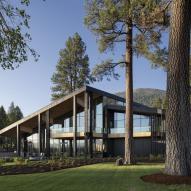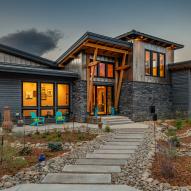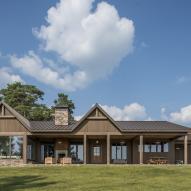A Perfectly Imperfect Finish
“There’s a harmonious concept between wood and finish that needs to be celebrated in the right way,” says Jonathan Taylor operations manager for Pioneer Millworks. “Especially with the exteriors of people’s homes, or even just products in general, we have moved away from paint, and we’ve moved to this celebration of wood. A finish needs to be complimentary and bring out the best qualities of the wood and that’s what the Shou Sugi Ban process does.”
The traditional practice of Shou Sugi Ban is a centuries old trade of burning or charring wood in order to provide longevity and preserve the beauty inherent to the wood. The burning process creates an alluring, yet imperfect cracked finish burned in a deep iridescent black. This procedure is only the beginning of the wood’s second life cycle, as once burned, the charred finish will patina based on environmental factors and natural weathering.
While the classic charred finished is perfect on its own, we understand, that like opening a long closed ancient door, there is more to be understood from exploring this traditional process. We celebrate the century old tradition of Shou Sugi Ban, but have updated it with our own contemporary twist. The result is a diverse and wide-ranging choice of specialized finishes that sit proudly next to the long practiced and established deep char look.
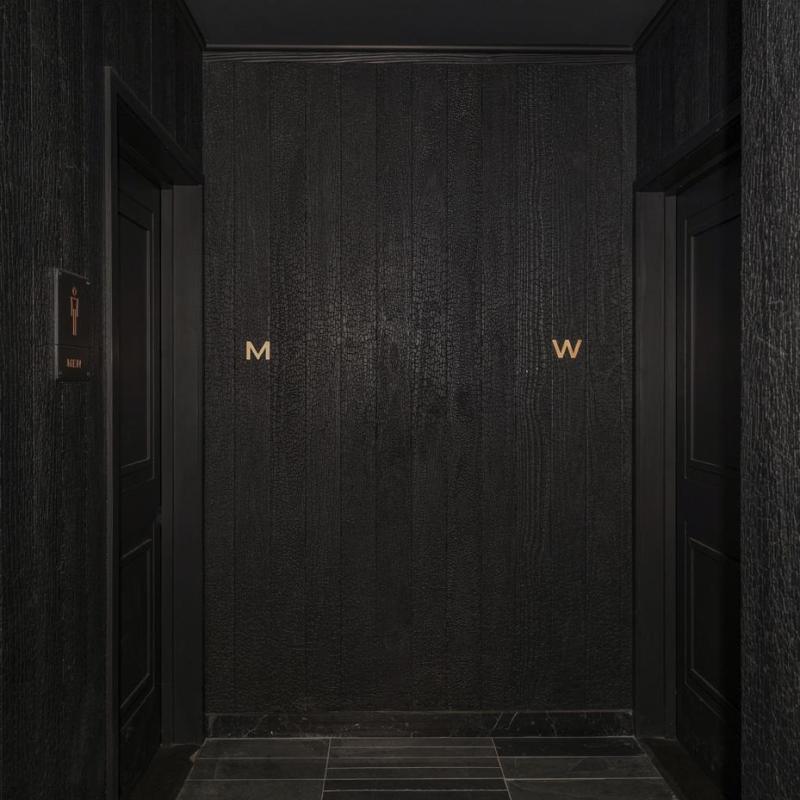
“The brushing process I think creates a dynamic look and an opportunity to achieve things that are otherwise not possible,” says Taylor.
Wire brushing the burned surface layer of char from the burned boards takes the Shou Sugi Ban art to a new level of detail. The brushing process reveals contrasting details not readily apparent upon first glance. Natural grain highlights and patterns from the burn process and the complexities of the knots and textures pop to the surface. Like the char, the brushed area can be left to weather naturally or coated with a custom finish to add longevity.
“We had this open-ended idea of how to get a range of colors that makes for a desirable pallet that the clients will appreciate,” says Taylor. “Finishing is interesting, it’s a whole industry within itself in a lot of ways. When you get into really high end and complex finishing you take wood and make it something spectacular.”
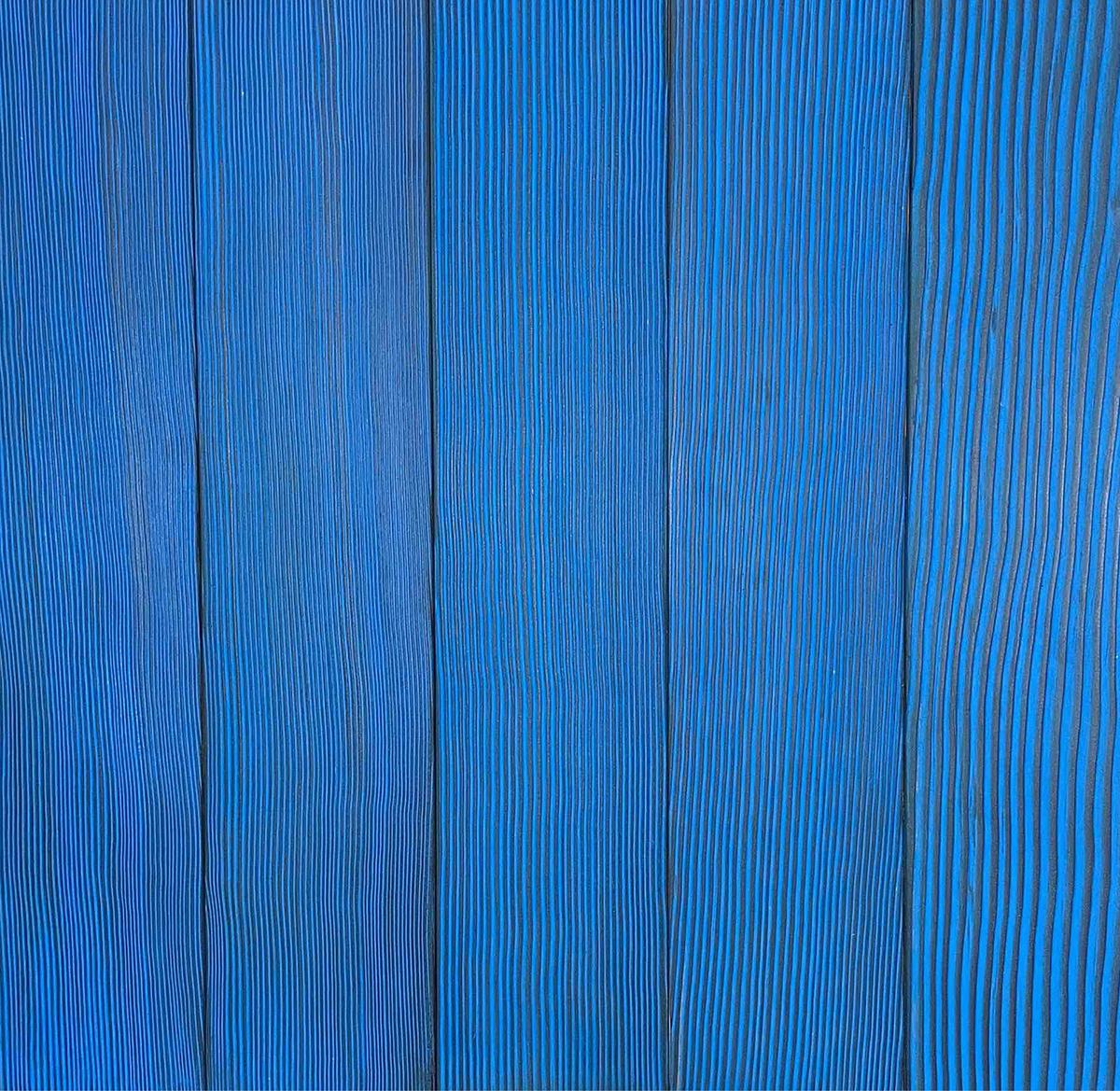
We explored ways to separate our Shou Sugi Ban line from traditional wood finishing, “Part of it is an emphasis on the grain and an emphasis on color variation as opposed to color consistency,” Taylor says. “It’s the opposite of paint, it’s everything that paint is not.” Instead of focusing on an array of closely related shadings, the focus is on the absolute best version of a specific color. Our finishes are a color wheel of vibrant hues, muted contrasts and hypnotic tones. Taken in conjunction with the diverse personality of each wood species, an entirely new artistic statement in wood is made. There are endless combinations of sustainable substrates and proprietary colors to choose from. Here are a few of our favorites:
Larch Cobalt: An electric blue finish that makes a bold statement and illustrates the contrast between our vibrant colors and the dark stripes of the char.
Larch Ember: Hot and heavy reds sizzle side by side dynamic grains and knots.
Fir Smoke: An inviting gray hue that alternates with deeply charred and vertically striped grains.
“The Shou Sugi Ban line was really the first time we sat down and thought about the product holistically and how each piece of it, each color, each look had its own unique thing that didn’t overlap or over run something else,” says Taylor. This intentionality of choices considers external factors such as the current market, design trends, popular colors and brands, and distills these factors into one focused collection.
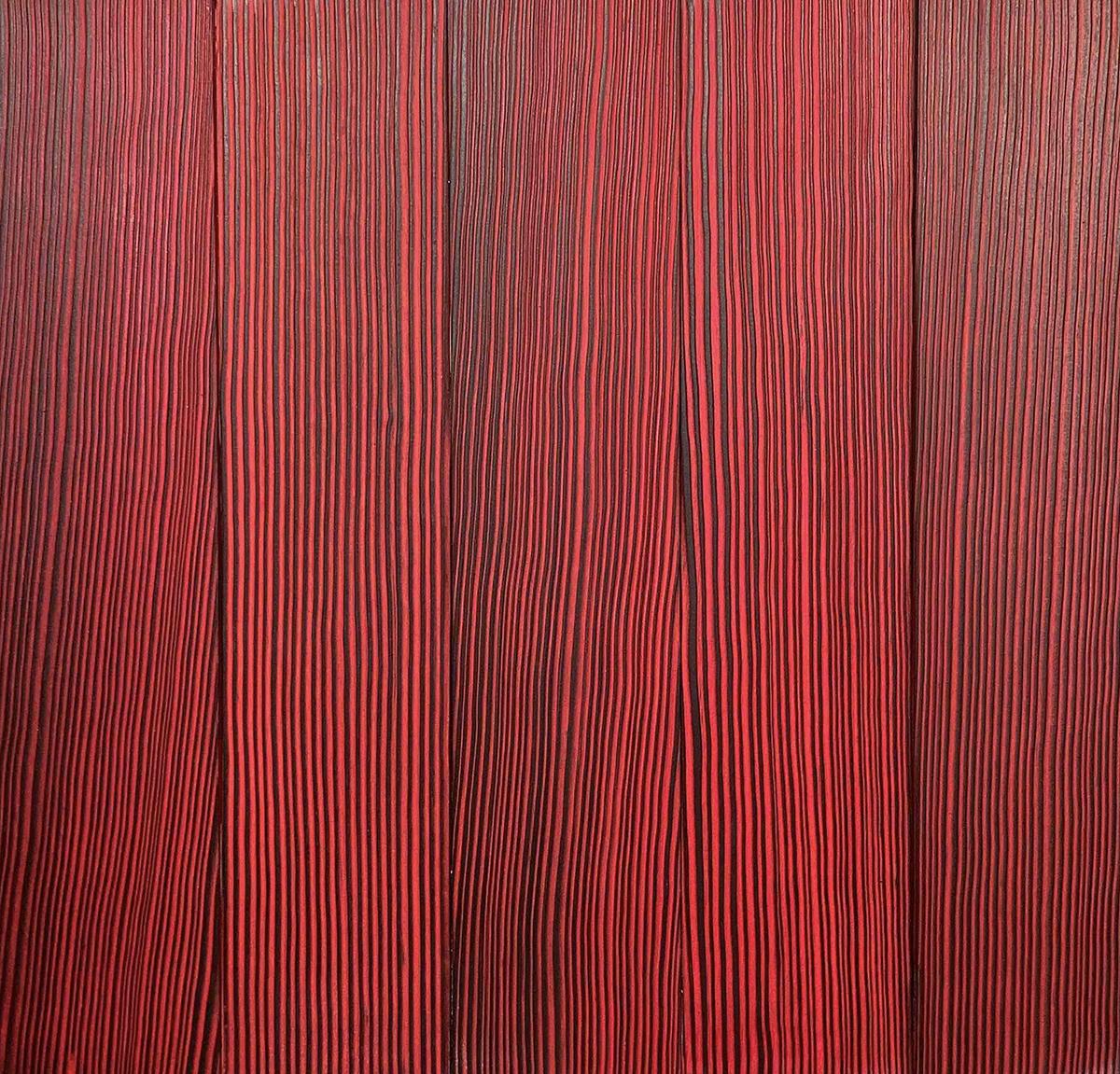
“The finish is a funny thing when it comes to wood. Everybody wants the finish to last as long as possible but are they willing to compromise how the finish looks in the beginning so that the finish can look the same forever, says Taylor. “The product isn’t designed or intended to be the same forever. It’s not plastic, everything has seasons.”

Pioneer Millworks picked three sustainably harvested substrates to be used as the base material for our Shou Sugi Ban line. Larch, FSC-Certified® Douglas fir, and FSC-Certified® Accoya. The timbers, all responsibly harvested, are durable and illustrate the ability to take a burn without degradation of the wood’s natural beauty. Additionally, they all emit unique personality traits that assert themselves through the Shou Sugi Ban process. Pioneer Millworks expansion of the Shou Sugi Ban technique introduces a special array of colors ranging from biophilic to vibrant and in tones and textures you would never expect to see from a piece of timber.
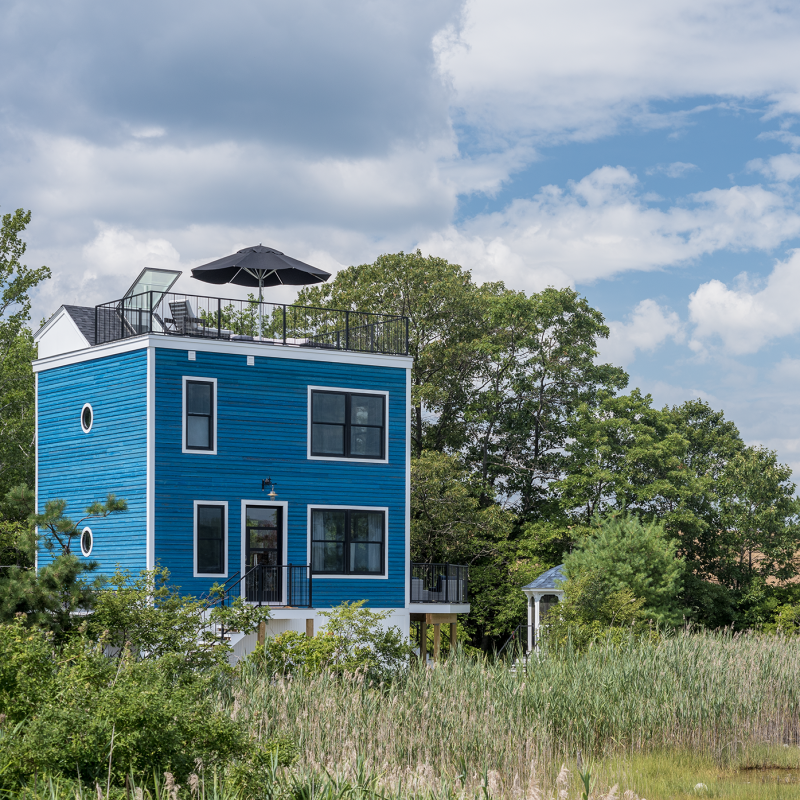
“Finishing brings out the complexity of the knots and the detail, you have some natural wood, but there’s also finish. It also depends on how the light hits it, and the boards you’re looking at, Taylor says. “Where you stand and how you relate to it gives back different looks. You can take larch and put beige paint on it, and it would look like stuff. You can take larch and put nothing on it, and it would look like wood. When you combine these processes, it takes individual instruments and makes them a symphony.”


